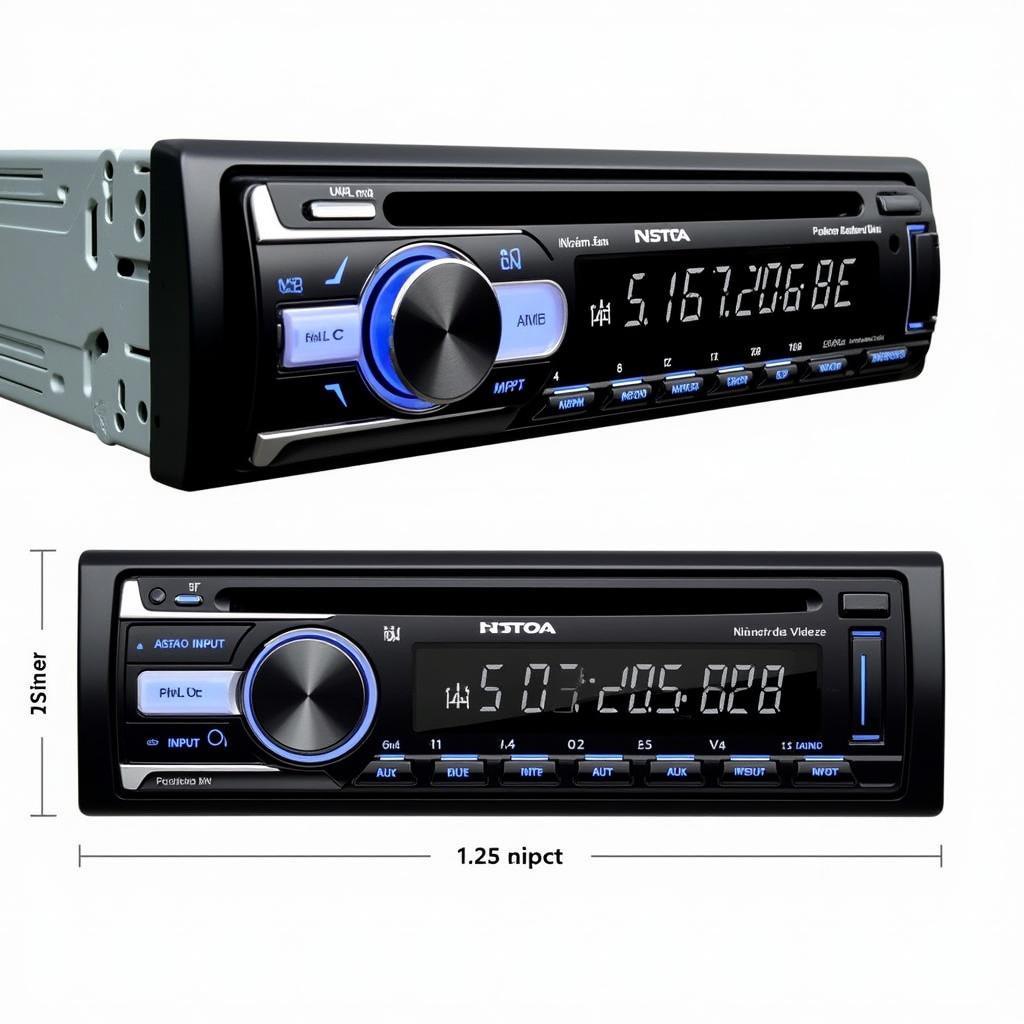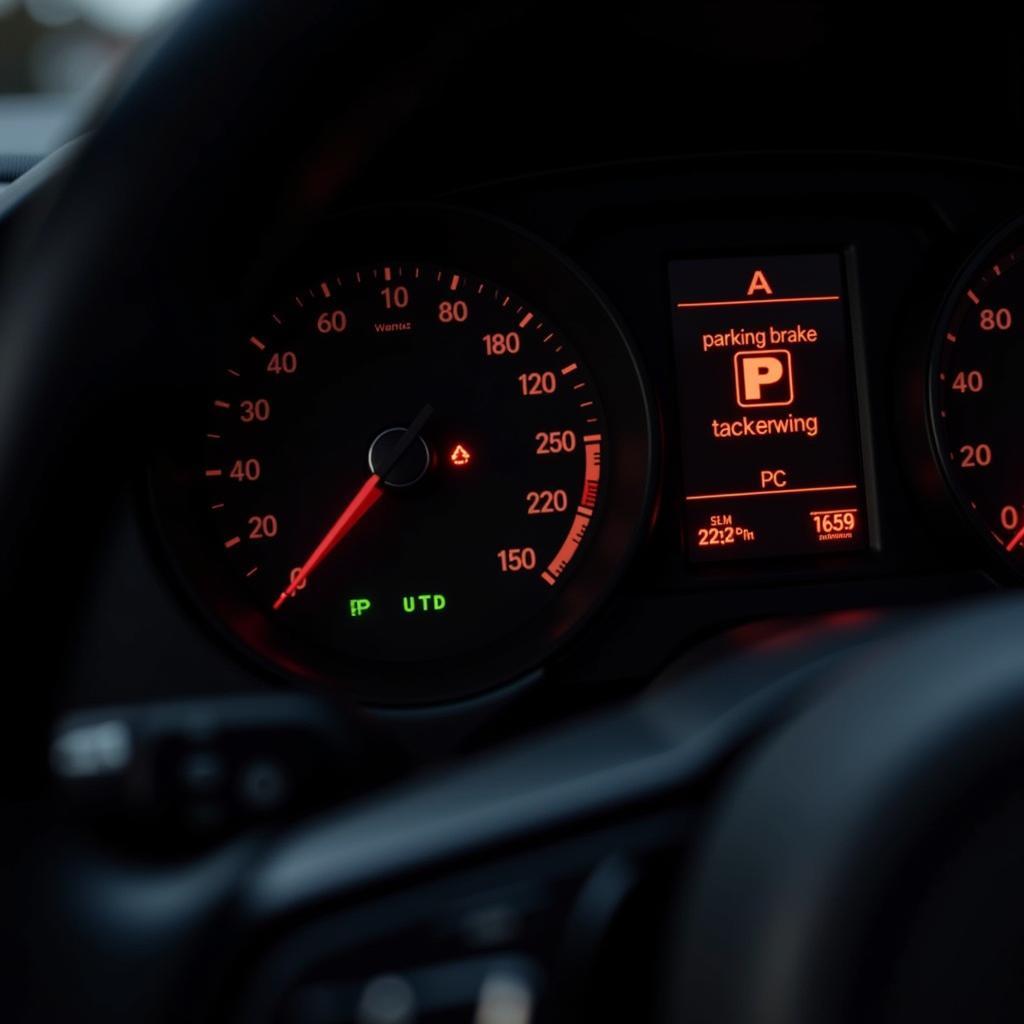A broken key fob can be a major inconvenience, leaving you stranded and frustrated. Whether your car key fob is completely unresponsive, intermittently working, or physically damaged, understanding the potential causes and solutions is crucial. This comprehensive guide will delve into the common issues associated with broken key fobs, offering practical fixes and insights into replacement options.
Common Causes of a Broken Key Fob
Before jumping into solutions, it’s essential to identify the root cause of your key fob malfunction. Here are some of the most common culprits:
1. Dead Key Fob Battery: This is often the simplest and most frequent reason for a non-responsive key fob.
2. Key Fob Programming Errors: Issues during the programming process or accidental erasure of programming can render your key fob useless.
3. Physical Damage: A cracked casing, water damage, or impact from a fall can disrupt the key fob’s internal components and circuitry.
4. Worn-out Buttons: Constant use can wear down the rubber or plastic buttons on your key fob, leading to poor contact and functionality issues.
5. Internal Component Failure: While less common, components like the transmitter or receiver inside the key fob can malfunction over time.
6. Vehicle Receiver Issues: In some cases, the problem might not be with the key fob itself but with the receiver module in your car.
Troubleshooting and Fixing a Broken Key Fob
Depending on the cause of your broken key fob, there are several troubleshooting steps and potential fixes you can try:
1. Replace the Key Fob Battery
Start with the easiest solution. Consult your car’s manual to identify the correct battery type for your key fob. Carefully open the fob casing (usually with a small screwdriver or coin) and replace the old battery with a new one, ensuring correct polarity.
Expert Insight: “Always opt for high-quality batteries for your key fob. Cheap, low-quality batteries can leak and damage the fob’s internal components,” advises John Miller, Senior Automotive Electrician at Car Repair Solutions.
2. Reprogram the Key Fob Yourself
Some vehicles allow you to reprogram your key fob at home using a specific sequence of button presses and ignition cycles. Refer to your owner’s manual for instructions specific to your car model.
3. Inspect for Physical Damage
Carefully examine the key fob for any visible cracks, dents, or loose parts. If you find any damage, especially involving water exposure, it’s best to consult a professional locksmith or dealership for repair or replacement.
4. Address Worn-out Buttons
If the buttons are worn out, you can try cleaning them with a cotton swab dipped in isopropyl alcohol. Allow them to dry completely before testing the fob. If cleaning doesn’t help, consider replacing the entire button pad, which you can often find online or at specialized electronics stores.
5. Seek Professional Help
If DIY troubleshooting and fixes fail, it’s crucial to seek professional assistance. A qualified automotive locksmith or dealership can diagnose more complex issues, such as internal component failures or vehicle receiver problems.
When to Replace a Broken Key Fob
While some key fob problems are fixable, certain situations warrant a replacement:
- Severe Physical Damage: Extensive damage, like a crushed casing or internal water damage, usually makes repair impractical or impossible.
- Internal Component Failure: Malfunctioning transmitters, receivers, or other internal components often require specialized knowledge and equipment to repair, making replacement a more cost-effective solution.
- Lost or Stolen Key Fob: If your key fob is lost or stolen, it’s essential to get a replacement programmed to your vehicle to maintain security and prevent unauthorized access.
Key Fob Replacement Options
When it’s time for a new key fob, you have a few options:
1. Dealership: Dealerships offer OEM (Original Equipment Manufacturer) key fobs specifically designed for your car model. While this option ensures compatibility and quality, it’s typically the most expensive.
2. Automotive Locksmith: Reputable automotive locksmiths can provide aftermarket key fobs that are often more affordable than dealership options. Make sure the locksmith is experienced in programming fobs for your specific car make and model.
3. Online Retailers: Various online retailers sell key fobs, but it’s crucial to purchase from a trusted source to avoid counterfeit or incompatible products. Double-check compatibility with your vehicle before buying.
Preventing Key Fob Problems
While not all issues are preventable, you can take steps to prolong your key fob’s lifespan and minimize the risk of problems:
-
Use a Protective Case: A durable case can shield your key fob from impact, scratches, and moisture.
-
Keep Batteries Fresh: Replace the battery every 2-3 years or sooner if you notice signs of weakening (e.g., reduced range).
-
Avoid Extreme Temperatures: Don’t expose your key fob to prolonged heat or cold, as this can affect battery life and potentially damage internal components.
-
Handle with Care: Avoid dropping your key fob or subjecting it to unnecessary force.
2014 honda civic key fob battery
Conclusion
A broken key fob can be a significant inconvenience, but understanding the common causes and solutions can help you get back on the road quickly. While simple fixes like battery replacement or reprogramming are often successful, seeking professional assistance is crucial for complex issues or when replacement is necessary. Remember, taking preventative measures and handling your key fob with care can significantly extend its lifespan and minimize the risk of encountering these frustrating issues.


